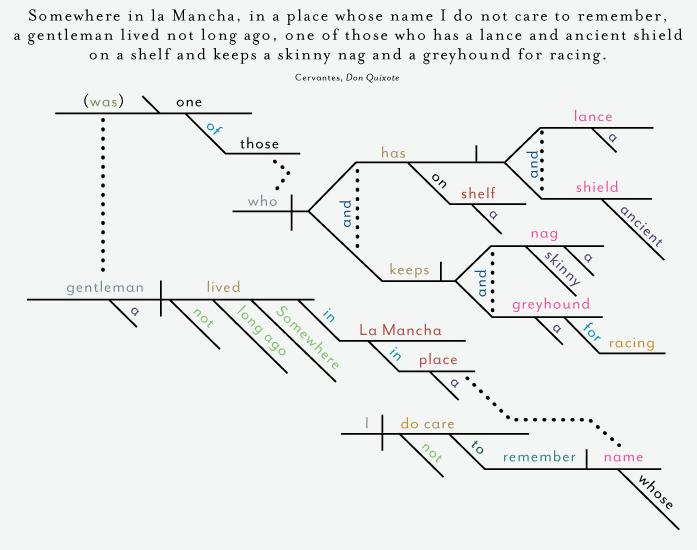syn·site
in Johanna Flato's terms: an ever-evolving conceptual constellation, an entangled situating crystallized from a myriad of fragmented realities. Simultaneity and singularities dance in a swirling waltz of intertwined moments and spaces, each adding to the cacophony and harmony of this complex site. A syn-site is a living, breathing tapestry of the world, constantly rewriting its own narrative, always open to edits, always challenging what we have come to accept as static or fixed. It is a manifestation of a world that is anything but singular or isolated — it is a world that is complex, interwoven, and infinitely entangled.
in Johanna Flato's terms: an ever-evolving conceptual constellation, an entangled situating crystallized from a myriad of fragmented realities. Simultaneity and singularities dance in a swirling waltz of intertwined moments and spaces, each adding to the cacophony and harmony of this complex site. A syn-site is a living, breathing tapestry of the world, constantly rewriting its own narrative, always open to edits, always challenging what we have come to accept as static or fixed. It is a manifestation of a world that is anything but singular or isolated — it is a world that is complex, interwoven, and infinitely entangled.
SYN (along with, at the same time | from Greek SYN, with | ~SYNTHETIC) + SITE (N: point of event, occupied space, internet address; V: to place in position | from Latin SITUS, location, idleness, forgetfulness | ~WEBSITE ¬cite ¬sight), cf. SITE/NON-SITE (from Robert Smithson, A PROVISIONAL THEORY OF NONSITES, 1968)
ax·is /ˈaksəs/ noun
plural noun: axes
1. imaginary line about which a body rotates. GEOMETRY an imaginary straight line passing through the center of a symmetrical solid, about which a plane figure can be conceived as rotating to generate the solid. an imaginary line which divides something into equal or roughly equal halves, especially in the direction of its greatest length.
2. MATHEMATICS a fixed reference line for the measurement of coordinates.
3. a straight central part in a structure to which other parts are connected.
4. ANATOMY the second cervical vertebra, below the atlas at the top of the backbone.
5. an agreement or alliance between two or more countries that forms a center for an eventual larger grouping of nations.
Origin: late Middle English: from Latin, ‘axle, pivot’.
ax·is /ˈaksəs/ noun
plural noun: axes
1. imaginary line about which a body rotates. GEOMETRY an imaginary straight line passing through the center of a symmetrical solid, about which a plane figure can be conceived as rotating to generate the solid. an imaginary line which divides something into equal or roughly equal halves, especially in the direction of its greatest length.
2. MATHEMATICS a fixed reference line for the measurement of coordinates.
3. a straight central part in a structure to which other parts are connected.
4. ANATOMY the second cervical vertebra, below the atlas at the top of the backbone.
5. an agreement or alliance between two or more countries that forms a center for an eventual larger grouping of nations.
Origin: late Middle English: from Latin, ‘axle, pivot’.
ax·is /ˈaksəs/ noun
plural noun: axes
1. imaginary line about which a body rotates. GEOMETRY an imaginary straight line passing through the center of a symmetrical solid, about which a plane figure can be conceived as rotating to generate the solid. an imaginary line which divides something into equal or roughly equal halves, especially in the direction of its greatest length.
2. MATHEMATICS a fixed reference line for the measurement of coordinates.
3. a straight central part in a structure to which other parts are connected.
4. ANATOMY the second cervical vertebra, below the atlas at the top of the backbone.
5. an agreement or alliance between two or more countries that forms a center for an eventual larger grouping of nations.
Origin: late Middle English: from Latin, ‘axle, pivot’.






axe /aks/ verb
3rd person present: axes
1. end, cancel, or dismiss suddenly and ruthlessly. Similar: cancel withdraw drop abandon end terminate put an end to discontinue scrap cut junk ditch dump give something the chop pull the plug on knock something on the head dismiss give someone notice throw out get rid of lay off let go discharge make redundant sack fire kick out boot out give someone the sack give someone the boot give someone the bullet give someone the push show someone the door give someone the elbow give someone their cards
2. cut or strike with an axe, especially violently or destructively.
Old English æx, of Germanic origin; related to Dutch aaks and German Axt.
axe /aks/ verb
3rd person present: axes
1. end, cancel, or dismiss suddenly and ruthlessly. Similar: cancel withdraw drop abandon end terminate put an end to discontinue scrap cut junk ditch dump give something the chop pull the plug on knock something on the head dismiss give someone notice throw out get rid of lay off let go discharge make redundant sack fire kick out boot out give someone the sack give someone the boot give someone the bullet give someone the push show someone the door give someone the elbow give someone their cards
2. cut or strike with an axe, especially violently or destructively.
Old English æx, of Germanic origin; related to Dutch aaks and German Axt.
axe /aks/ verb
3rd person present: axes
1. end, cancel, or dismiss suddenly and ruthlessly. Similar: cancel withdraw drop abandon end terminate put an end to discontinue scrap cut junk ditch dump give something the chop pull the plug on knock something on the head dismiss give someone notice throw out get rid of lay off let go discharge make redundant sack fire kick out boot out give someone the sack give someone the boot give someone the bullet give someone the push show someone the door give someone the elbow give someone their cards
2. cut or strike with an axe, especially violently or destructively.
Old English æx, of Germanic origin; related to Dutch aaks and German Axt.



..."cut-up" (we would now say "remix") culture is discussed in which digital technologies provide a platform for individuals to respond to authoritarian top-down messaging/massaging. Remixes become "a critical weapon against spectacular society." Bukatman discusses William S. Burroughs, Jean Baudrillard and Don Delillo (specifically the novel White Noise) here; and he goes on to argue, "The scrambling of language defamiliarizes it, revealing its pervasiveness and operant illusions."
..."cut-up" (we would now say "remix") culture is discussed in which digital technologies provide a platform for individuals to respond to authoritarian top-down messaging/massaging. Remixes become "a critical weapon against spectacular society." Bukatman discusses William S. Burroughs, Jean Baudrillard and Don Delillo (specifically the novel White Noise) here; and he goes on to argue, "The scrambling of language defamiliarizes it, revealing its pervasiveness and operant illusions."
..."cut-up" (we would now say "remix") culture is discussed in which digital technologies provide a platform for individuals to respond to authoritarian top-down messaging/massaging. Remixes become "a critical weapon against spectacular society." Bukatman discusses William S. Burroughs, Jean Baudrillard and Don Delillo (specifically the novel White Noise) here; and he goes on to argue, "The scrambling of language defamiliarizes it, revealing its pervasiveness and operant illusions."
We don’t walk down the street saying to ourselves: ‘As I walk down the street, comma, I contemplate the question of faith, or adultery, or x or y or z.’
We don’t walk down the street saying to ourselves: ‘As I walk down the street, comma, I contemplate the question of faith, or adultery, or x or y or z.’
We don’t walk down the street saying to ourselves: ‘As I walk down the street, comma, I contemplate the question of faith, or adultery, or x or y or z.’






syn·tax /ˈsinˌtaks/ noun
the arrangement of words and phrases to create well-formed sentences in a language. - a set of rules for or an analysis of the syntax of a language. plural noun: syntaxes "generative syntax"
Origin: late 16th century: from French syntaxe, or via late Latin from Greek suntaxis, from sun- ‘together’ + tassein ‘arrange’.
syn·tax /ˈsinˌtaks/ noun
the arrangement of words and phrases to create well-formed sentences in a language. - a set of rules for or an analysis of the syntax of a language. plural noun: syntaxes "generative syntax"
Origin: late 16th century: from French syntaxe, or via late Latin from Greek suntaxis, from sun- ‘together’ + tassein ‘arrange’.
syn·tax /ˈsinˌtaks/ noun
the arrangement of words and phrases to create well-formed sentences in a language. - a set of rules for or an analysis of the syntax of a language. plural noun: syntaxes "generative syntax"
Origin: late 16th century: from French syntaxe, or via late Latin from Greek suntaxis, from sun- ‘together’ + tassein ‘arrange’.









[...] I must have been five years old and I was trailing my hand in the water and I thought about how the water was moving around my fingers — opening on one side and closing on the other — and that changing system of relationships where everything was kind of similar, kind of the same, and yet different. That was so difficult to visualize and express. And just generalizing that the world is a system of ever-changing relationships and structures struck me as a vast truth. Which it is! [...]
Writing is the process of reducing a tapestry of interconnection to a narrow sequence. This is a wrongful compression of what should spread out.
In today's computers they betrayed that because there's no system for decent "cut-and-paste" and they changed the meaning of the words "cut-and-paste" and pretended it was the same thing. [...] I consider that to be a crime against humanity [...] because humanity has no decent writing tools. In any case, this is the problem of interconnection and representation and sequentialization all similar to the issue of water.
[...] I must have been five years old and I was trailing my hand in the water and I thought about how the water was moving around my fingers — opening on one side and closing on the other — and that changing system of relationships where everything was kind of similar, kind of the same, and yet different. That was so difficult to visualize and express. And just generalizing that the world is a system of ever-changing relationships and structures struck me as a vast truth. Which it is! [...]
Writing is the process of reducing a tapestry of interconnection to a narrow sequence. This is a wrongful compression of what should spread out.
In today's computers they betrayed that because there's no system for decent "cut-and-paste" and they changed the meaning of the words "cut-and-paste" and pretended it was the same thing. [...] I consider that to be a crime against humanity [...] because humanity has no decent writing tools. In any case, this is the problem of interconnection and representation and sequentialization all similar to the issue of water.
[...] I must have been five years old and I was trailing my hand in the water and I thought about how the water was moving around my fingers — opening on one side and closing on the other — and that changing system of relationships where everything was kind of similar, kind of the same, and yet different. That was so difficult to visualize and express. And just generalizing that the world is a system of ever-changing relationships and structures struck me as a vast truth. Which it is! [...]
Writing is the process of reducing a tapestry of interconnection to a narrow sequence. This is a wrongful compression of what should spread out.
In today's computers they betrayed that because there's no system for decent "cut-and-paste" and they changed the meaning of the words "cut-and-paste" and pretended it was the same thing. [...] I consider that to be a crime against humanity [...] because humanity has no decent writing tools. In any case, this is the problem of interconnection and representation and sequentialization all similar to the issue of water.